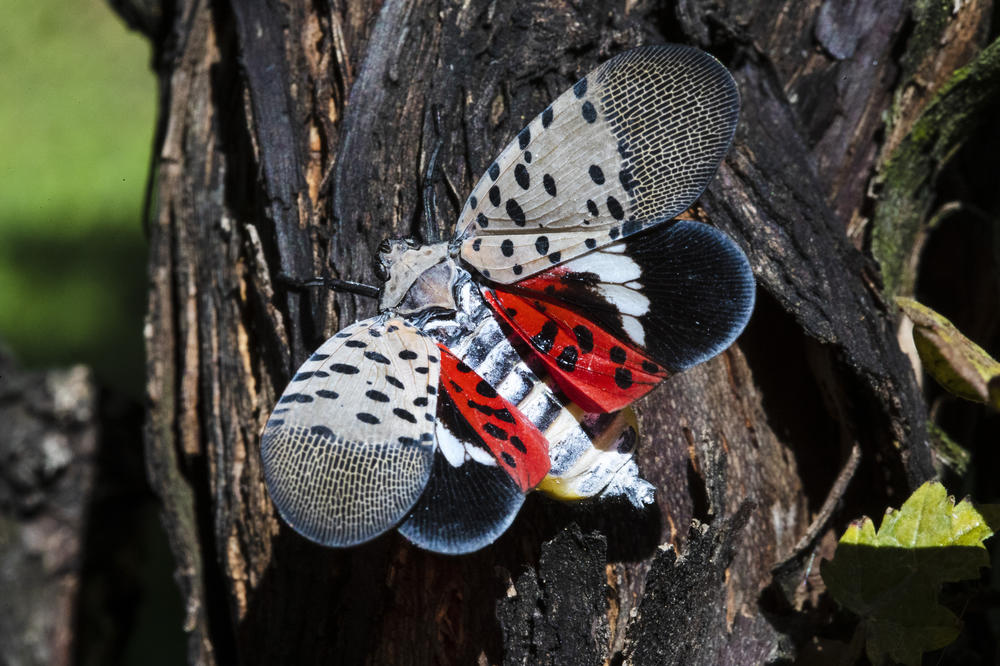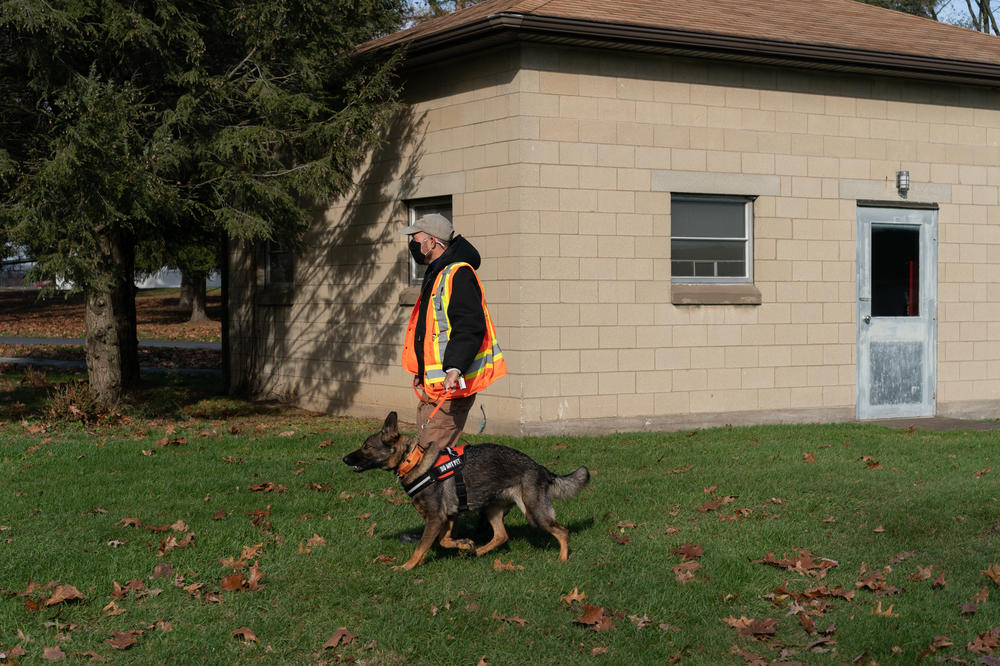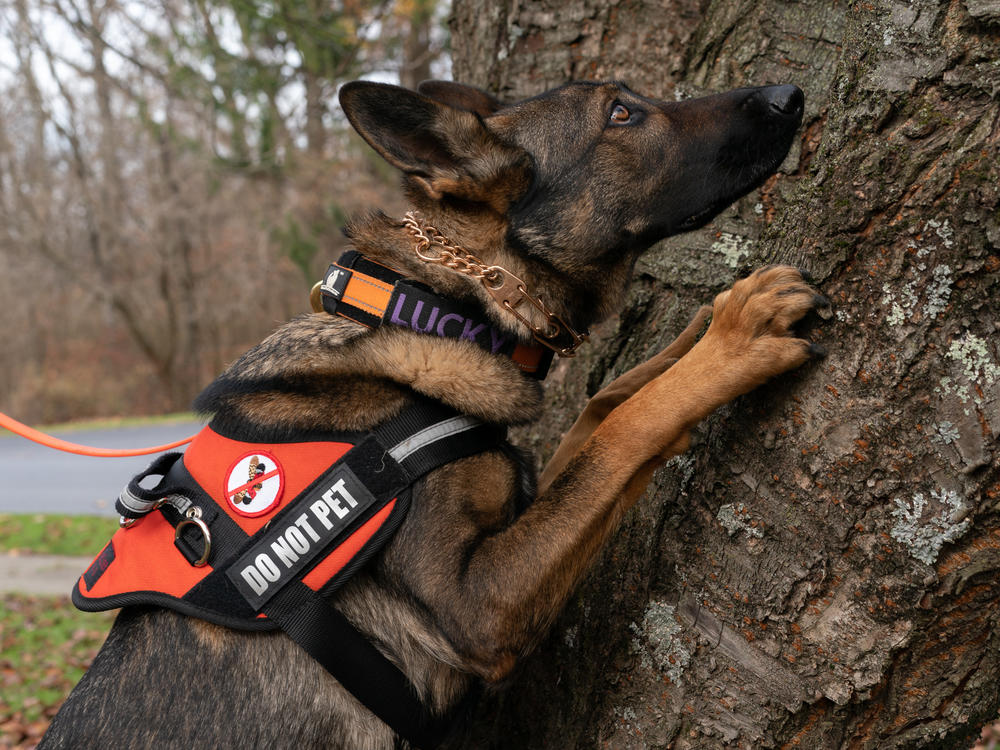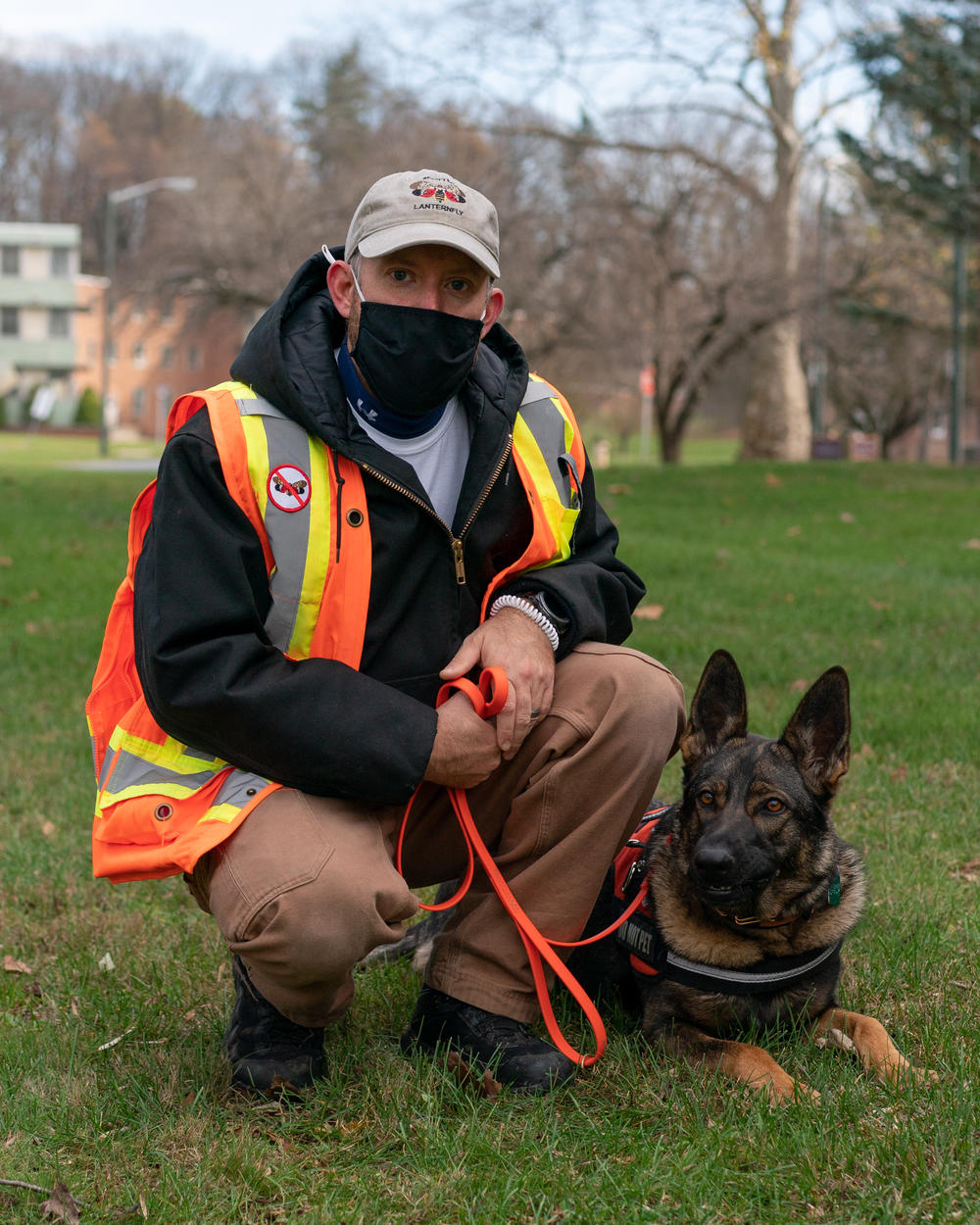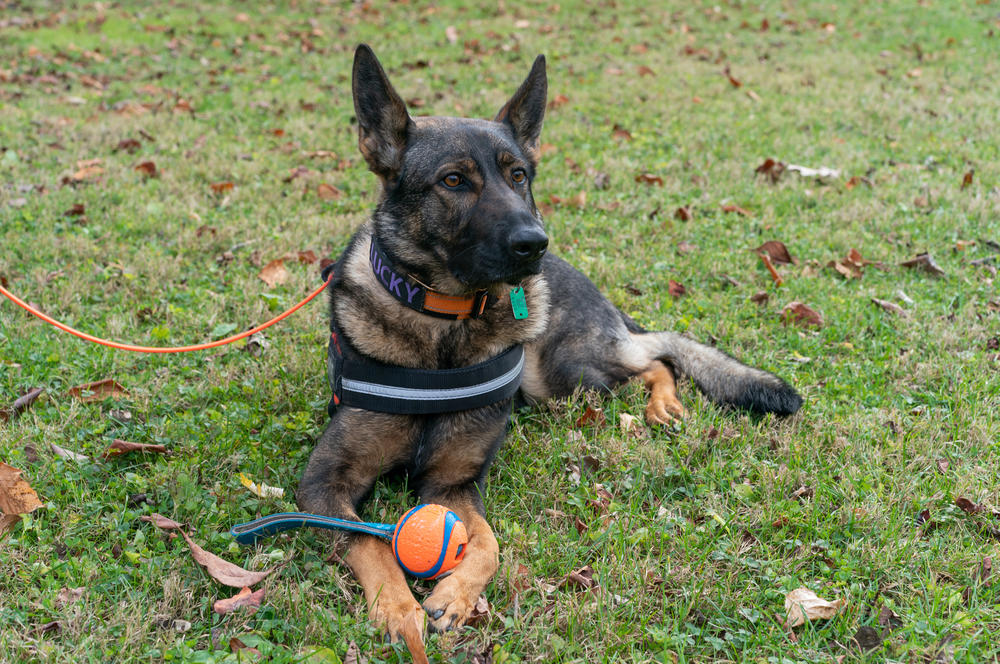Section Branding
Header Content
Pennsylvania Turns To Man's Best Friend To Sniff Out Spotted Lanternfly Infestation
Primary Content
Spotted lanternflies are easy enough to spot, with ruby red streaks beneath black-and-white wings that blend like an abstract expressionist painting.
But six years after the first sightings of them, Pennsylvanians have been told to squash them on sight. They exact a huge toll on agriculture. The insects feed off 70 plant species, including fruit trees and grapevines, and they could cost Pennsylvania $324 million per year in lost crops and 2,800 agricultural jobs if left unchecked.
Squashing the adults won't solve the problem, however. Their eggs are odorless to humans and hard to find, tucked into wheel wells, tree trunks, pots and crates.
"Transporting them somewhere where they can devastate a vineyard or destroy crops — it's a huge danger," says Shannon Powers of the Pennsylvania Department of Agriculture.
With no natural predators in the U.S., the native Southeast Asian insect is spreading quickly. There are infestations in six other states and sightings as far as Massachusetts and North Carolina.
The only option is to stop them from hatching.
While the spotted lanternfly has a modern-art look, it also has some nasty habits, often causing black sooty mold to grow in its wake. The insects hatch in the spring and lay clusters of 30 to 50 eggs in the fall.
Lucky, a 19-month-old German shepherd, is the first dog trained to find the eggs of the colorful cousin of cicadas and aphids before the lanternflies hatch and spread their wings.
Lucky's work matters most on the border of infested areas, according to Cynthia Otto, a veterinarian and executive director of the University of Pennsylvania School of Veterinary Medicine's Working Dog Center, which trained Lucky.
Lucky's handler, Shane Philipps, works at the Department of Agriculture. He has no dog-training background, but after working to eradicate Asian long-horned beetles in Ohio, he came up with the idea for canine lanternfly tracking. After eight weeks of training, Lucky moved in with Philipps' family and its two dogs.
"You're taking on a dog that's a little different than your average pet," Philipps says. "They want to work all the time. If you let them lay around, they're going to get a little crazy."
For U.S. and Canadian businesses that transport agrobusiness through southern Pennsylvania, where 26 counties are quarantined, Philipps and Lucky do regular egg inspections. When Lucky finds eggs, Philipps scrapes them into a glass jar of alcohol to kill them, sometimes saving them for later training exercises. It's slow work, but it beats squashing them underfoot.
The Working Dog Center has graduated more than 100 dogs, using positive reinforcement to train them for other sniff-intensive work, including tracking COVID-19.
Training a dog in spotted lanternfly tracking isn't cheap. It's $35,000 for training, plus Philipps' time and equipment. Lucky's first year is covered by a $110,000 grant from the U.S. Department of Agriculture. And now, the Pennsylvania Department of Agriculture is a major research center for fighting spotted lanternflies, with more than $34 million in state and federal funding to date.
In the coming years, canine lanternfly tracking is poised to take off, and if the program works, researchers think they can train dogs on a much larger scale — long before the treacherous masterpieces take flight.
Caroline Gutman is a photojournalist based in Philadelphia.
Copyright 2020 NPR. To see more, visit https://www.npr.org.
